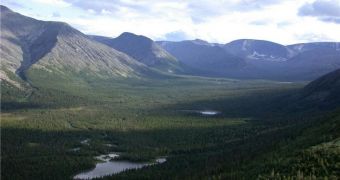One of the main arguments that critics to global warming and climate change have been citing when arguing for their point of view is the fact that some areas in the Arctic are cooling, not getting warmer. And there was a time when their argument held value, but that time has long since passed, experts say. At this point, even the areas of the Arctic that have cooled constantly over the past 100 years are getting warmer, denoting the overall ascending trend global temperatures exhibit, AlphaGalileo reports.
This warming has been found to have started at the beginning of the 1990s, which means that it has been taking place for about two decades. The new work was carried out by German and Russian researchers, who took a look at tree rings in forests located above the Arctic Circle. The data they analyzed spanned more than 400 years, and so they were able to paint a complete picture of what went on in the Arctic region, temperature-wise. The Kola Peninsula, in Russia, was the main site for the investigation, but numerous other areas in the Arctic were also targeted.
The team found out that, since 1600 AD, temperatures have been maintaining at an average of 12.2 degrees Celsius. Variations ranged from 10.4°C back in 1709 to 14.7°C, in 1957. “The data indicate that solar activity may have been one of the major driving factors of summer temperatures, but this has been overlaid by other factors since 1990,” the investigators say. Members of the international team that conducted the investigation are based at the Institute of Geography in Moscow, the Hohenheim University, and the Helmholtz Centre for Environmental Research (UFZ), in Germany. Details of their work appear in the latest issue of the esteemed scientific journal Arctic.
“Besides of temperature, growth is also strongly influenced by non-climatic factors like light, nutrients, water supply and competition from other trees. So it is vital to isolate these trends to obtain a climate signal as pure as possible,” says Russian Academy of Sciences expert Yury M. Kononov. “One thing is certain: this part of the Arctic [the Kola Peninsula] warmed up after the end of the Little Ice Age around 250 years ago, cooled down from the middle of the last century and has been warming up again since 1990,” UFZ paleoclimatologist Dr Tatjana Bottger concludes.

 14 DAY TRIAL //
14 DAY TRIAL //